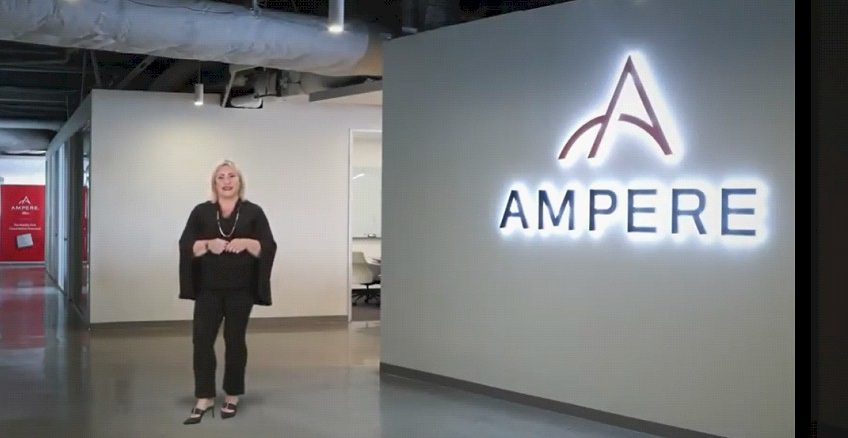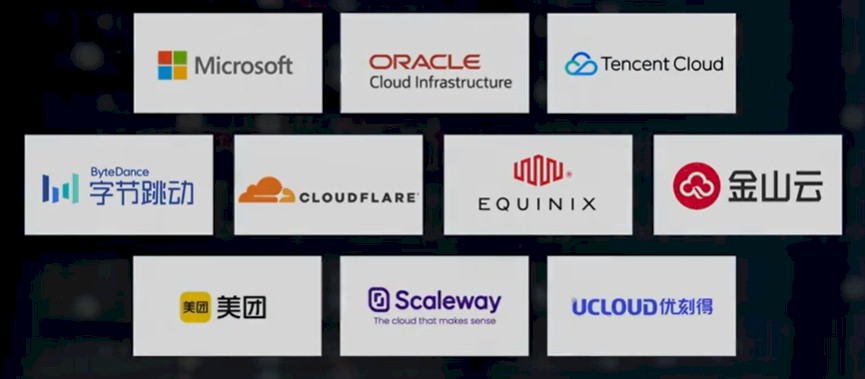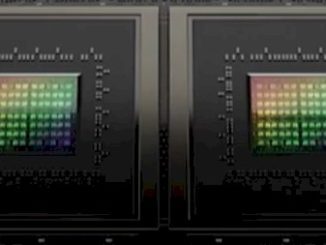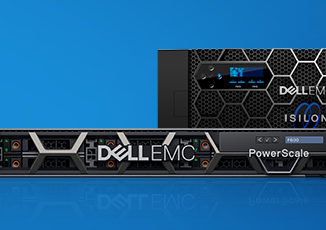
Outside of the HPC market where there are a number of companies that have delivered or are working on Arm-based server processors, Ampere Computing is the main independent supplier of Arm-based server chips with its current 80-core Altra chips and its impending 128-core Altra Max chips, which are sampling now and will start shipping in the third quarter.
Today, the top brass at Ampere Computing raised the curtain a little higher on its Arm server chip business, and talked a bit about its future processors and its prospects in breaking into the datacenters of the hyperscalers and largest public clouds – the target customers that the company was founded to chase. We sat down with Renee James, who spent close to three decades at Intel, rising to be the executive assistant to company co-founder Andy Grove and then went on to run various Intel divisions, including its own cloud business (launched ahead of AWS, by the way) as well as its HPC and software businesses before rising to become president of Intel in 2013. She founded Ampere Computing in 2017, and secured the backing of The Carlyle Group and the intellectual property and some of the team at Applied Micro, the first big Arm server chip designer, to get it going.
Timothy Prickett Morgan: We have done our part to plaster your roadmap all over the place, and now you are going to put a little more flesh on the bones and actually talk about customers and performance.
Renee James: A lot of people don’t even know who we are because we haven’t been very vocal except with folks like yourself who care about things like this. So our presentation today is open to anyone who comes to our website. We’ve been sending out social media notices with the intent of really just getting a broader viewership – other than every single employee at every single competitor to come and learn what we’re doing. Although that is great recruiting. The news that we are talking about – what we have been waiting a long time to talk about because we didn’t want to actually blow our cover – is our roadmap.
What we actually are about as a company is innovation. We have hundreds of patents filed and, more importantly, we are working on our own Ampere core, which will sample in 2022 on 5 nanometer processes. Metaphorically, this is analogous to the Apple M1 for PCs.
We are also talking about customers, and probably the biggest and most notable one that people have been speculating about is Microsoft, which is going to be very detailed in their use of Altra and Altra Max in Azure and their collaboration with us on our on the next product line. In addition, several others like Tencent and Oracle will be in our roadmap webcast and others will make announcements.
And finally, we will for the first time release our performance data on the 128-core Altra Max products.
TPM: We will be drilling into this all separately, but I wanted to have a chat about server processors.
Renee James: We are all really excited because this is what we started the company to do. And three and a half years later, we finally get to actually tell our story. And it was really painful for us to keep quiet, even though we knew the Altra and Altra Max, which are based on Arm N1 cores, are outstanding products, we are an Arm architectural licensee and always have been. We have been building and building, and people have been saying that we are just an ARM implementation company. They are saying that we are this, or we are that. They are asking if we are going to be here for the long haul. We want to answer all of that.
TPM: As for questions, there is really only one after so many Arm server chip makers have left the field or decided at the last minute not to enter it. Excepting, of course, specialized processors like the HPC variants being done by Fujitsu, SiPearl, Nvidia, ETRI, and MEITY, it has really come down to Ampere Computing and Amazon Web Services.
So, are you going to mop up everybody who might be tempted to pull an AWS and build their own as AWS has done with line Graviton line? I see this as a 50 percent scenario. There’s a 50 percent chance that you will get everybody who just says, oh, screw it, I don’t want to do that. And there’s a 50 percent chance that they do their own and also buy from you. So what are the real prospects for the Super 8 doing their own? Some are less inclined than others – Google recently said it really doesn’t want to design its own general purpose server CPUs.
Renee James: That’s a great question.
TPM: It is the only question as far as Ampere Computing is concerned, given you only targeted the hyperscalers and cloud builders. [Laughter]
Renee James: [Laughter] And of course, that’s the only question. So ByteDance, Tencent, Oracle, and a few others have already gone public with their private previews of Altra.
TPM: But we keep hearing that Microsoft is going to do its own Arm server chips after betting big on ThunderX2 and the ill-fated ThunderX3. . . . I realize you can’t out any of these companies specifically.
Renee James: This is how I would respond. Some of the big guys aren’t on this chart above because they just weren’t ready to go public. I think companies can do both. I think you will be shocked: Was this a sweep? Maybe. But are they still doing their own? Maybe.
Money gives them the options to try things that they might not otherwise try. And then other things come into play. For instance, when you are in a big company – and hey, I’ve been there before –you think you’re invincible, you think you can do everything.
It is our job to convince them that we are going to do the best job for them when it comes to server CPUs. And that’s on us, not on them
I think the answer to that question will be known after the 5 nanometer generation of Ampere products comes to market – if we do our job right. You just get so many economies of scale. Even the biggest of the big are not that big because the server volume overall, as you well know, is dwarfed by client volumes. And so when you go to get pricing and run these in a factory, do all that, the numbers don’t always add up. Until we made this announcement today, who was the horizontal supplier with a server part at scale with leadership performance and attributes?
TPM: At the moment, nobody. The answer is nobody is. AWS represents a volume of its own, but nowhere near what the Super 8 together could do.
Renee James: The answer as of this morning is Ampere.
TPM: OK, so what kind of volumes can you get through Taiwan Semiconductor Manufacturing Corp in a constrained semiconductor market where advanced processes are not just hard, but hard to get your hands on? If I wanted to buy a million of these things next year, can you do it? I think AMD and Nvidia, for instance, have been understandably conservative with their wafer supply contracts. And here we are seeing AMD renegotiating one with GlobalFoundries for some I/O chips for Epyc server parts and presumably the wafer starts are being upped at TSMC. The point is, when you are in this server CPU game, you kind of have to believe your own bullshit or you end up limiting yourself, and it becomes a self-fulfilling prophecy about being supply constrained.
Renee James: Here’s what I’m going to say. . . .
TPM: I have said that delicately, I realize. But it gets the point across. [Laughter]
Renee James: [Laughter] You don’t have to be delicate with me. I’ve been in this business for thirty years and I’m one of the few women. So know that I can I hold my own – ask around.
TPM: I know that, we talked before, and I don’t need anyone to tell me that. [Laughter]
Renee James: Here’s the thing: If I don’t bet on me, who else will? And having been on the other side of this, having had 90-plus percent share in this business, the previous enterprise server business at Intel, not the cloud server business that Ampere is focused on, I know what it takes to scale. I know how fast you can reasonably scale a new microprocessor. So, you can go from hundreds of thousands of units to a million. You could go from one million to two and a half million. You can then go on to three million or five million. But it takes time.
However, if you know who your customers are and you can forecast into the future and you bet on you, you go and you start putting supply in place. We have given our forecast to our suppliers through 2026 now. We have put forward contracts in place through 2023. We raised a funding round recently that was over-subscribed by our current investors. Our new investors wanted in, we couldn’t even accommodate them. It was 100 percent to fund supply chain so we would plan to get to economic scale in semis, which as you know is a revenue number that has a B in front of it. In order to get there, you have to sell a lot. In order to sell a lot, you have got to be able to supply You have got to build the capacity and then you fill it. And that is the same problem whether you are building your own fabs or your buying capacity from someone else. As Andy Grove used to say, “You shouldn’t be in the business if you don’t like the gamble.”
TPM: That’s right, and you have go to use chips to gamble. . . .
Renee James: [Laughter] Yes, you do. This is a hard business. It is a gut-wrenching business. And you can imagine for a board comprised of professional investors in this company, this is not what they do. So getting them over the hurdle on this has been largely possible because the caliber and the quality of the customers that we are targeting – and winning – is extraordinarily high.
TPM: You will you consider using Intel Foundry Services to etch Ampere chips? Because that kind of loop closing would be funny to me.
Renee James: I don’t know yet what the Intel Foundry Services offerings are. I only know what what my long time colleague, Pat Gelsinger, has said. If they made us an offer and they had great services and they could supply us beyond 5 nanometers, we would look at anything. We look at all the suppliers. We happen to need leading edge processes.
TPM: So you look at all four, I mean all three, I mean all two, er, I mean all one of them. Yeah, all one of them. . . .
Renee James: And we don’t just need leading edge. We need leading edge and we need server-caliber transistors. So remember, servers CPUs are not like client CPUs. The transistor density, the transistor height, the layout, the leakage current of the process – everything is different. Takes one to know one, right? Lots of companies that tried to be in the server business came from client CPUs. And there’s no disparagement there because they did a lot of work on the ecosystem for which I’m thankful. But getting a manufactured part at this performance at 128 plus cores – obviously our 5 nanometer chip will have higher core count than Altra Max – is rare earth. And could Intel do it? Absolutely.
I think that people will be surprised at the caliber customers. And the thing that I would want you to know is this: not all of them are going public at our announcement today.
Think about it: If I wrote you a business plan, and I said I’m going raise a ton of money to start a microprocessor business that’s only going to sell to the cloud and to the edge of the cloud. And I’m going to win this many of the Super 8. And yeah, that’s my business plan. You would laugh and say: “That’s great. Good luck with that.”
But that is what we have executed. It’s as far-fetched as the original FedEx business plan must have sounded, and people back then must have said that FedEx was clearly insane. But actually, no.
TPM: It can be done. You just have got to resist the temptation to be everything to everyone.
Renee James: You have to resist temptation. You have to focus and execute. And I would say the theme of the last three and a half years at this company has been focus and execution. And I would say focus, focus, focus, because in semis, you can get yourself very distracted and it costs you a lot of money. What you really need to do is get super-focused and get to volume and then you can spread from there. So clearly we’re executing that that point of view.
TPM: What makes the hyperscalers and cloud builders different, aside from the volume and the pricing they except? Do they need really different kinds of CPUs from the enterprise?
Renee James: There are a couple of other things. There are features that are specific to the cloud that wouldn’t make the cut in a general purpose CPU. You know, if you’re trying to take one product and stretch it across multiple segments, you make different choices. And we’ve been there before. And at one point in my not-so-recent history, we had to bifurcate. And you have to make a decision for this part of the market. So it’s not just the core, it’s also the features, the performance, and the cadence.
Annual cadence matters to these customers. These customers do not buy point products. They buy roadmaps. And we needed the ability to control the cadence, and to add the features on the cadence. Right. So the features may come, but they got to come when they need to come. And it all needs to be backward compatible with Arm. It’s just that the design point for the core is starting with the cloud, not starting with the biggest segment that you might be serving.
There’s no disparagement here. We have been very, very happy with our relationship with Arm. We’re very happy with the products we built on their N1 core. They are excellent products. There’s no issue. But the feature set is evolving and the cadence just really has to hit the mark because we have competitors. You stack them up all the time against each other, right? They’re not sitting still. We have had the leadership team that has been in a very competitive market like this before and they know that timing, timing, timing, timing matters. What is the biggest enemy in semiconductors? Being late! Yes. Don’t be late. Don’t be late. Time is the enemy.
TPM: Well, what server CPU designers and manufacturers do is extremely hard to do. And that’s why when there are screw ups, I don’t go crazy with the criticism because I don’t think people really appreciate how improbable it is that this works at all.
Renee James: I shouldn’t say this to you, but every single time one comes back, and it boots – I mean, we do full of full-scale simulation now, so we know we’ve already booted Linux on the 5 nanometer part – but every time it turns on and everything works the way it’s supposed to, just go, thank you.
TPM: You exhale.
Renee James: I’m 30 years into this and every single time it’s still a miracle. And the first time we taped out Altra, Atiq Bajwa, our chief technology officer, told me that was his 59th large scale tape out. And still he had the same feeling of “oh my gosh, oh my gosh” until the day it came back.
TPM: We call we call that “major pucker factor” here at The Next Platform. [Laughter]
Last question. AWS kind of backed into Graviton by doing Nitro. Is there a way that you can take the 80-core “Quicksilver” Altra, the 128-core “Mystique” Altra Max, and the kickers in the roadmap, including the 5 nanometer “Siryn” chip coming in 2022, and scale it down in some way to turn it into a DPU? Why should people have different processors, much less different architectures, on their DPUs?
Renee James: I talked about maniacal focus. But, you know, obviously these are general purpose microprocessors. And already we can do lower core count chops for the cloud edge. But there are obvious things. We have a package. We have our own packaging team. Obviously, we build our own development environment and test platforms and everything. I would say, given our heritage, that we would be excited about opportunities like that.






Be the first to comment